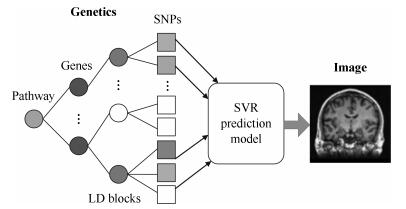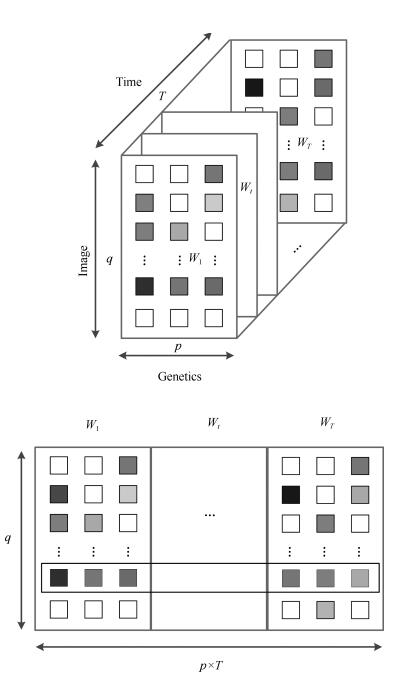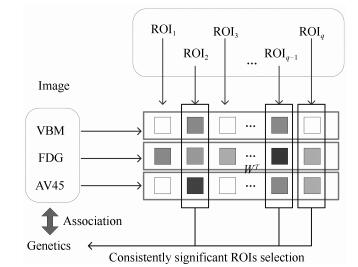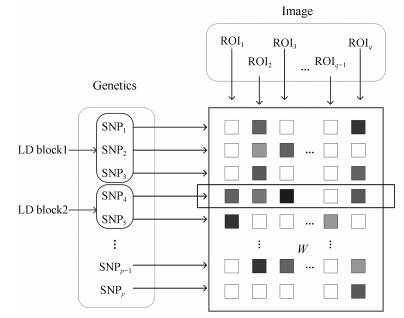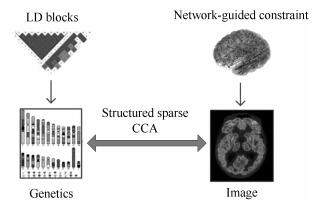|
[1]
|
Hariri A R, Weinberger D R. Imaging genomics. British Medical Bulletin, 2003, 65(1):259-270 doi: 10.1093/bmb/65.1.259
|
|
[2]
|
Thompson P M, Martin N G, Wright M J. Imaging genomics. Current Opinion in Neurology, 2010, 23(4):368-373 https://www.ncbi.nlm.nih.gov/pmc/articles/PMC2927195
|
|
[3]
|
Glahn D C, Thompson P M, Blangero J. Neuroimaging endophenotypes:strategies for finding genes influencing brain structure and function. Human Brain Mapping, 2007, 28(6):488-501 doi: 10.1002/(ISSN)1097-0193
|
|
[4]
|
Gottesman I I, Gould T D. The endophenotype concept in psychiatry:etymology and strategic intentions. The American Journal of Psychiatry, 2003, 160(4):636-645 doi: 10.1176/appi.ajp.160.4.636
|
|
[5]
|
Meyer-Lindenberg A, Weinberger D R. Intermediate phenotypes and genetic mechanisms of psychiatric disorders. Nature Reviews Neuroscience, 2006, 7(10):818-827 doi: 10.1038/nrn1993
|
|
[6]
|
Ge T, Schumann G, Feng J F. Imaging genetics-towards discovery neuroscience. Quantitative Biology, 2013, 1(4):227-245 doi: 10.1007/s40484-013-0023-1
|
|
[7]
|
Winkler A M, Kochunov P, Blangero J, Almasy L, Zilles K, Fox P T, Duggirala R, Glahn D C. Cortical thickness or grey matter volume? The importance of selecting the phenotype for imaging genetics studies. NeuroImage, 2010, 53(3):1135-1146 doi: 10.1016/j.neuroimage.2009.12.028
|
|
[8]
|
Smith S M, Fox P T, Miller K L, Glahn D C, Fox P M, Mackay C E, Filippini N, Watkins K E, Toro R, Laird A R, Beckmann C F. Correspondence of the brain's functional architecture during activation and rest. Proceedings of the National Academy of Sciences of the United States of America, 2009, 106(31):13040-13045 doi: 10.1073/pnas.0905267106
|
|
[9]
|
Tost H, Bilek E, Meyer-Lindenberg A. Brain connectivity in psychiatric imaging genetics. NeuroImage, 2012, 62(4):2250-2260 doi: 10.1016/j.neuroimage.2011.11.007
|
|
[10]
|
Rubinov M, Sporns O. Complex network measures of brain connectivity:uses and interpretations. NeuroImage, 2010, 52(3):1059-1069 doi: 10.1016/j.neuroimage.2009.10.003
|
|
[11]
|
Hardy J, Singleton A. Genomewide association studies and human disease. The New England Journal of Medicine, 2009, 360(17):1759-1768 doi: 10.1056/NEJMra0808700
|
|
[12]
|
Klein R J, Zeiss C, Chew E Y, Tsai J Y, Sackler R S, Haynes C, Henning A K, SanGiovanni J P, Mane S M, Mayne S T, Bracken M B, Ferris F L, Ott J, Barnstable C, Hoh J. Complement factor H polymorphism in age-related macular degeneration. Science, 2005, 308(5720):385-389 doi: 10.1126/science.1109557
|
|
[13]
|
Esslinger C, Walter H, Kirsch P, Erk S, Schnell K, Arnold C, Haddad L, Mier D, von Boberfeld C O, Raab K, Witt S H, Rietschel M, Cichon S, Meyer-Lindenberg A. Neural mechanisms of a genome-wide supported psychosis variant. Science, 2009, 324(5927):605 doi: 10.1126/science.1167768
|
|
[14]
|
Medland S E, Jahanshad N, Neale B M, Thompson P M. Whole-genome analyses of whole-brain data:working within an expanded search space. Nature Neuroscience, 2014, 17(6):791-800 doi: 10.1038/nn.3718
|
|
[15]
|
Liu J Y, Calhoun V D. A review of multivariate analyses in imaging genetics. Frontiers in Neuroinformatics, 2014, 8:Article No.29 https://www.researchgate.net/profile/Vince_Calhoun/publication/261605474_A_review_of_multivariate_analyses_in_imaging_genetics/links/54ee6c520cf2e2830864d17b/A-review-of-multivariate-analyses-in-imaging-genetics.pdf
|
|
[16]
|
Thompson P M, Ge T, Glahn D C, Jahanshad N, Nichols T E. Genetics of the connectome. NeuroImage, 2013, 80:475-488 doi: 10.1016/j.neuroimage.2013.05.013
|
|
[17]
|
Daniel W W, Cross C L. Biostatistics:A Foundation for Analysis in the Health Sciences (Tenth Edition). New York:Wiley, 2013.
|
|
[18]
|
Potkin S G, Guffanti G, Lakatos A, Turner J A, Kruggel F, Fallon J H, Saykin A J, Orro A, Lupoli S, Salvi E, Weiner M, Macciardi F, The Alzheimer's Disease Neuroimaging Initiative. Hippocampal atrophy as a quantitative trait in a genome-wide association study identifying novel susceptibility genes for Alzheimer's disease. PLoS One, 2009, 4(8):Article No.e6501 doi: 10.1371/journal.pone.0006501
|
|
[19]
|
Shen L, Thompson P M, Potkin S G, Bertram L, Farrer L A, Foroud T M, Green R C, Hu X L, Huentelman M J, Kim S, Kauwe J S K, Li Q Q, Liu E C, Macciardi F, Moore J H, Munsie L, Nho K, Ramanan V K, Risacher S L, Stone D J, Swaminathan S, Toga A W, Weiner M W, Saykin A J. Genetic analysis of quantitative phenotypes in AD and MCI:imaging, cognition and biomarkers. Brain Imaging and Behavior, 2014, 8(2):183-207 doi: 10.1007/s11682-013-9262-z
|
|
[20]
|
Risacher S L, Shen L, West J D, Kim S, McDonald B C, Beckett L A, Harvey D J, Jack Jr C R, Weiner M W, Saykin A J. Longitudinal MRI atrophy biomarkers:relationship to conversion in the ADNI cohort. Neurobiology of Aging, 2010, 31(8):1401-1418 doi: 10.1016/j.neurobiolaging.2010.04.029
|
|
[21]
|
Risacher S L, Kim S, Shen L, Nho K, Foroud T, Green R C, Petersen R C, Jack Jr C R, Aisen P S, Koeppe R A, Jagust W J, Shaw L M, Trojanowski J Q, Weiner M W, Saykin A J. The role of apolipoprotein E (APOE) genotype in early mild cognitive impairment (E-MCI). Frontiers in Aging Neuroscience, 2013, 5:Article No.11 https://www.sciencedirect.com/science/article/pii/S0197458005001053
|
|
[22]
|
Ho A J, Stein J L, Hua X, Lee S, Hibar D P, Leow A D, Dinov I D, Toga A W, Saykin A J, Shen L, Foroud T, Pankratz N, Huentelman M J, Craig D W, Gerber J D, Allen A N, Corneveaux J J, Stephan D A, DeCarlig C S, DeChairo B M, Potkin S G, Jack Jr C R, Weiner M W, Raji C A, Lopez O L, Becker J T, Carmichael O T, Thompson P M. A commonly carried allele of the obesity-related FTO gene is associated with reduced brain volume in the healthy elderly. Proceedings of the National Academy of Sciences of the United States of America, 2010, 107(18):8404-8409 doi: 10.1073/pnas.0910878107
|
|
[23]
|
Reiman E M, Chen K W, Liu X F, Bandy D, Yu M X, Lee D, Ayutyanont N, Keppler J, Reeder S A, Langbaum J B S, Alexander G E, Klunk W E, Mathis C A, Price J C, Aizenstein H J, DeKosky S T, Caselli R J. Fibrillar amyloid-β burden in cognitively normal people at 3 levels of genetic risk for Alzheimer's disease. Proceedings of the National Academy of Sciences of the United States of America, 2009, 106(16):6820-6825 doi: 10.1073/pnas.0900345106
|
|
[24]
|
Sloan C D, Shen L, West J D, Wishart H A, Flashman L A, Rabin L A, Santulli R B, Guerin S J, Rhodes C H, Tsongalis G J, McAllister T W, Ahles T A, Lee S L, Moore J H, Saykin A J. Genetic pathway-based hierarchical clustering analysis of older adults with cognitive complaints and amnestic mild cognitive impairment using clinical and neuroimaging phenotypes. American Journal of Medical Genetics Part B-Neuropsychiatric Genetics, 2010, 153B(5):1060-1069 doi: 10.1002/ajmg.b.v153b:5
|
|
[25]
|
Swaminathan S, Shen L, Risacher S L, Yoder K K, West J D, Kim S, Nho K, Foroud T, Inlow M, Potkin S G, Huentelman M J, Craig D W, Jagust W J, Koeppe R A, Mathis C A, Jack Jr C R, Weiner M W, Saykin A J. Amyloid pathway-based candidate gene analysis of[11C]PiB-PET in the Alzheimer's Disease Neuroimaging Initiative (ADNI) cohort. Brain Imaging and Behavior, 2012, 6(1):1-15 doi: 10.1007/s11682-011-9136-1
|
|
[26]
|
Chiang M C, Barysheva M, McMahon K L, de Zubicaray G I, Johnson K, Montgomery G W, Martin N G, Toga A W, Wright M J, Shapshak P, Thompson P M. Gene network effects on brain microstructure and intellectual performance identified in 472 twins. Journal of Neuroscience, 2012, 32(25):8732-8745 doi: 10.1523/JNEUROSCI.5993-11.2012
|
|
[27]
|
Saykin A J, Shen L, Foroud T M, Potkin S G, Swaminathan S, Kim S, Risacher S L, Nho K, Huentelman M J, Craig D W, Thompson P M, Stein J L, Moore J H, Farrer L A, Green R C, Bertram L, Jack Jr C R, Weiner M W. Alzheimer's Disease Neuroimaging Initiative biomarkers as quantitative phenotypes:genetics core aims, progress, and plans. Alzheimer's & Dementia, 2010, 6(3):265-273 https://www.sciencedirect.com/science/article/pii/S1552526010000828
|
|
[28]
|
Potkin S G, Turner J A, Fallon J A, Lakatos A, Keator D B, Guffanti G, Macciardi F. Gene discovery through imaging genetics:identification of two novel genes associated with schizophrenia. Molecular Psychiatry, 2009, 14(4):416-428 doi: 10.1038/mp.2008.127
|
|
[29]
|
Shen L, Kim S, Risacher S L, Nho K, Swaminathan S, West J D, Foroud T, Pankratz N, Moore J H, Sloan C D, Huentelman M J, Craig D W, DeChairo B M, Potkin S G, Jack Jr C R, Weiner M W, Saykin A J. Whole genome association study of brain-wide imaging phenotypes for identifying quantitative trait loci in MCI and AD:a study of the ADNI cohort. NeuroImage, 2010, 53(3):1051-1063 doi: 10.1016/j.neuroimage.2010.01.042
|
|
[30]
|
Stein J L, Hua X, Lee S, Ho A J, Leow A D, Toga A W, Saykin A J, Shen L, Foroud T, Pankratz N, Huentelman M J, Craig D W, Gerber J D, Allen A N, Corneveaux J J, DeChairo B M, Potkin S G, Weiner M W, Thompson P M. Voxelwise genome-wide association study (vGWAS). NeuroImage, 2010, 53(3):1160-1174 doi: 10.1016/j.neuroimage.2010.02.032
|
|
[31]
|
Biffi A, Anderson C D, Desikan R S, Sabuncu M, Cortellini L, Schmansky N, Salat D, Rosand J, Alzheimer's Disease Neuroimaging Initiative (ADNI). Genetic variation and neuroimaging measures in Alzheimer disease. Archives of Neurology, 2010, 67(6):677-685 doi: 10.1001/archneurol.2010.108
|
|
[32]
|
Kauwe J S K, Bertelsen S, Mayo K, Cruchaga C, Abraham R, Hollingworth P, Harold D, Owen M J, Williams J, Lovestone S, Morris J C, Goate A M. Suggestive synergy between genetic variants in TF and HFE as risk factors for Alzheimer's disease. American Journal of Medical Genetics Part B-Neuropsychiatric Genetics, 2010, 153B(4):955-959 https://ncrad.iu.edu/docs/Publications/237_Kauwe_2010.pdf
|
|
[33]
|
Dickerson B C, Wolk D A. Dysexecutive versus amnesic phenotypes of very mild Alzheimer's disease are associated with distinct clinical, genetic and cortical thinning characteristics. Journal of Neurology, Neurosurgery & Psychiatry, 2011, 82(1):45-51 http://jnnp.bmj.com/content/jnnp/82/1/45.full.pdf?legid=jnnp;82/1/45
|
|
[34]
|
Purcell S, Neale B, Todd-Brown K, Thomas L, Ferreira M A R, Bender D, Maller J, Sklar P, de Bakker P I W, Daly M J, Sham P C. PLINK:a tool set for whole-genome association and population-based linkage analyses. The American Journal of Human Genetics, 2007, 81(3):559-575 doi: 10.1086/519795
|
|
[35]
|
Gombar S, Jung H J, Dong F, Calder B, Atzmon G, Barzilai N, Tian X L, Pothof J, Hoeijmakers J H J, Campisi J, Vijg J, Suh Y. Comprehensive microRNA profiling in B-cells of human centenarians by massively parallel sequencing. BMC Genomics, 2012, 13(1):Article No.353 doi: 10.1186/1471-2164-13-353
|
|
[36]
|
Benjamini Y, Yekutieli D. The control of the false discovery rate in multiple testing under dependency. The Annals of Statistics, 2001, 29(4):1165-1188 doi: 10.1214/aos/1013699998
|
|
[37]
|
Hibar D P, Stein J L, Kohannim O, Jahanshad N, Saykin A J, Shen L, Kim S, Pankratz N, Foroud T, Huentelman M J, Potkin S G, Jack Jr C R, Weiner M W, Toga A W, Thompson P M. Voxelwise gene-wide association study (vGeneWAS):multivariate gene-based association testing in 731 elderly subjects. NeuroImage, 2011, 56(4):1875-1891 doi: 10.1016/j.neuroimage.2011.03.077
|
|
[38]
|
Hibar D P, Stein J L, Kohannim O, Jahanshad N, Jack C R, Weiner M W, Toga A W, Thompson P M. Principal components regression:multivariate, gene-based tests in imaging genomics. In:Proceedings of the 2011 IEEE International Symposium on Biomedical Imaging:from Nano to Macro. Chicago, IL, USA:IEEE, 2011. 289-293
|
|
[39]
|
Hibar D P, Kohannim O, Stein J L, Chiang M C, Thompson P M. Multilocus genetic analysis of brain images. Frontiers in Genetics, 2011, 2:Article No.73 doi: 10.3389/fgene.2011.00073/full
|
|
[40]
|
Ye J P, Liu J. Sparse Methods for Biomedical Data. ACM Sigkdd Explorations Newsletter, 2012, 14(1):4-15 doi: 10.1145/2408736
|
|
[41]
|
Wang J, Yang T, Thompson P, Ye J. Sparse models for imaging genetics. Machine Learning and Medical Imaging. New York:Academic Press, 2016. 129-151
|
|
[42]
|
Lin D D, Cao H B, Calhoun V D, Wang Y P. Sparse models for correlative and integrative analysis of imaging and genetic data. Journal of Neuroscience Methods, 2014, 237:69-78 doi: 10.1016/j.jneumeth.2014.09.001
|
|
[43]
|
Yan J, Du L, Yao X, Shen L. Machine learning in brain imaging genomics. Machine Learning and Medical Imaging. New York:Academic Press, 2016. 411-434
|
|
[44]
|
Donoho D L. Compressed sensing. IEEE Transactions on Information Theory, 2006, 52(4):1289-1306 doi: 10.1109/TIT.2006.871582
|
|
[45]
|
Tibshirani R. Regression shrinkage and selection via the lasso. Journal of the Royal Statistical Society:Series B (Methodological), 1996, 58(1):267-288 http://citeseer.ist.psu.edu/viewdoc/summary?doi=10.1.1.35.7574
|
|
[46]
|
Kohannim O, Hibar D P, Stein J L, Jahanshad N, Jack C R, Weiner M W, Toga A W, Thompson P M. Boosting power to detect genetic associations in imaging using multi-locus, genome-wide scans and ridge regression. In:Proceedings of the 2011 IEEE International Symposium on Biomedical Imaging:from Nano to Macro. Chicago, IL, USA:IEEE, 2011. 1855-1859
|
|
[47]
|
Kohannim O, Hibar D P, Jahanshad N, Stein J L, Hua X, Toga A W, Jack C R, Weinen M W, Thompson P M. Predicting temporal lobe volume on MRI from Genotypes Using L1-L2 regularized regression. In:Proceedings of the 9th IEEE International Symposium on Biomedical Imaging (ISBI). Barcelona, Spain:IEEE, 2012. 1160-1163
|
|
[48]
|
Kohannim O, Hibar D P, Stein J L, Jahanshad N, Hua X, Rajagopalan P, Toga A W, Jack Jr C R, Weiner M W, de Zubicaray G I, McMahon K L, Hansell N K, Martin N G, Wright M J, Thompson P M, The Alzheimer's Disease Neuroimaging Initiative. Discovery and replication of gene influences on brain structure using LASSO regression. Frontiers in Neuroscience, 2012, 6:Article No.115
|
|
[49]
|
Yang T, Wang J, Sun Q, Hibar D P, Jahanshad N, Liu L, Wang Y L, Zhan L, Thompson P M, Ye J P. Detecting genetic risk factors for Alzheimer's disease in whole genome sequence data via lasso screening. In:Proceedings of the 12th International Symposium on Biomedical Imaging (ISBI). New York, USA:IEEE, 2015. 985-989
|
|
[50]
|
Silver M, Montana G. Fast identification of biological pathways associated with a quantitative trait using group lasso with overlaps. Statistical Applications in Genetics and Molecular Biology, 2012, 11(1):Article No.7 https://www.researchgate.net/publication/227379253_Fast_Identification_of_Biological_Pathways_Associated_with_a_Quantitative_Trait_Using_Group_Lasso_with_Overlaps
|
|
[51]
|
Yuan M, Lin Y. Model selection and estimation in regression with grouped variables. Journal of the Royal Statistical Society:Series B-Statistical Methodology, 2006, 68(1):49-67 doi: 10.1111/rssb.2006.68.issue-1
|
|
[52]
|
Silver M, Chen P, Li R Y, Cheng C Y, Wong T Y, Tai E S, Teo Y Y. Pathways-driven sparse regression identifies pathways and genes associated with high-density lipoprotein cholesterol in two Asian cohorts. PLoS Genetics, 2013, 9(11):Article No.e1003939 doi: 10.1371/journal.pgen.1003939
|
|
[53]
|
Barrett J C, Fry B, Maller J, Daly M J. Haploview:analysis and visualization of LD and haplotype maps. Bioinformatics, 2005, 21(2):263-265 https://www.researchgate.net/publication/8414403_HAPLOVIEW_analysis_and_visualization_of_LD_and_haplotype_maps
|
|
[54]
|
Hao X K, Yu J T, Zhang D Q. Identifying genetic associations with MRI-derived measures via tree-guided sparse learning. In:Proceedings of the 17th International Conference on Medical Image Computing and Computer-Assisted Intervention. Boston, USA:Springer, 2014. 757-764
|
|
[55]
|
Wang J, Ye J P. Multi-layer feature reduction for tree structured group lasso via hierarchical projection. In:Proceedings of the 28th International Conference on Neural Information Processing Systems. Montréal, Quebec, Canada:MIT Press, 2015. 1279-1287
|
|
[56]
|
Wang H, Nie F P, Huang H, Yan J W, Kim S, Nho K, Risacher S L, Saykin A J, Shen L. From phenotype to genotype:an association study of longitudinal phenotypic markers to Alzheimer's disease relevant SNPs. Bioinformatics, 2012, 28(18):i619-i625 doi: 10.1093/bioinformatics/bts411
|
|
[57]
|
Hao X K, Yan J W, Yao X H, Risacher S L, Saykin A J, Zhang D Q, Shen L. Diagnosis-guided method for identifying multi-modality neuroimaging biomarkers associated with genetic risk factors in Alzheimer's disease. In:Proceedings of the Pacific Symposium on Biocomputing. Kohala Coast, Hawaii, USA:Stanford, 2016. 108-119
|
|
[58]
|
Wang H, Nie F P, Huang H, Kim S, Nho K, Risacher S L, Saykin A J, Shen L, The Alzheimer's Disease Neuroimaging Initiative. Identifying quantitative trait loci via group-sparse multitask regression and feature selection:an imaging genetics study of the ADNI cohort. Bioinformatics, 2012, 28(2):229-237 https://academic.oup.com/bioinformatics/article/28/2/229/199331/Identifying-quantitative-trait-loci-via-group
|
|
[59]
|
Vounou M, Nichols T E, Montana G, The Alzheimer's Disease Neuroimaging Initiative. Discovering genetic associations with high-dimensional neuroimaging phenotypes:a sparse reduced-rank regression approach. NeuroImage, 2010, 53(3):1147-1159 doi: 10.1016/j.neuroimage.2010.07.002
|
|
[60]
|
Vounou M, Janousova E, Wolz R, Stein J L, Thompson P M, Rueckert D, Montana G, The Alzheimer's Disease Neuroimaging Initiative. Sparse reduced-rank regression detects genetic associations with voxel-wise longitudinal phenotypes in Alzheimer's disease. NeuroImage, 2012, 60(1):700-716 doi: 10.1016/j.neuroimage.2011.12.029
|
|
[61]
|
Wang H, Nie F P, Huang H, Risacher S L, Saykin A J, Shen L, The Alzheimer's Disease Neuroimaging Initiative. Identifying disease sensitive and quantitative trait-relevant biomarkers from multidimensional heterogeneous imaging genetics data via sparse multimodal multitask learning. Bioinformatics, 2012, 28(1):i127-i136 http://paperity.org/p/41820021/identifying-quantitative-trait-loci-via-group-sparse-multitask-regression-and-feature
|
|
[62]
|
Liu J Y, Pearlson G, Windemuth A, Ruano G, Perrone-Bizzozero N I, Calhoun V. Combining fMRI and SNP data to investigate connections between brain function and genetics using parallel ICA. Human Brain Mapping, 2009, 30(1):241-255 doi: 10.1002/hbm.v30:1
|
|
[63]
|
Meda S A, Narayanan B, Liu J Y, Perrone-Bizzozero N I, Stevens M C, Calhoun V D, Glahn V D, Shen L, Risacher S L, Saykin A J, Pearlson G D. A large scale multivariate parallel ICA method reveals novel imaging-genetic relationships for Alzheimer's disease in the ADNI cohort. NeuroImage, 2012, 60(3):1608-1621 doi: 10.1016/j.neuroimage.2011.12.076
|
|
[64]
|
Hotelling H. The most predictable criterion. Journal of Educational Psychology, 1935, 26(2):139-142 doi: 10.1037/h0058165
|
|
[65]
|
Correa N M, Li Y O, Adali T, Calhoun V D. Canonical correlation analysis for feature-based fusion of biomedical imaging modalities and its application to detection of associative networks in schizophrenia. IEEE Journal of Selected Topics in Signal Processing, 2008, 2(6):998-1007 doi: 10.1109/JSTSP.2008.2008265
|
|
[66]
|
Wold S, Martens H, Wold H. The multivariate calibration problem in chemistry solved by the PLS method. Matrix Pencils. Berlin, Heidelberg:Springer, 1983:286-293
|
|
[67]
|
Krishnan A, Williams L J, McIntosh A R, Abdi H. Partial Least Squares (PLS) methods for neuroimaging:a tutorial and review. NeuroImage, 2011, 56(2):455-475 doi: 10.1016/j.neuroimage.2010.07.034
|
|
[68]
|
Witten D M, Tibshirani R, Hastie T. A penalized matrix decomposition, with applications to sparse principal components and canonical correlation analysis. Biostatistics, 2009, 10(3):515-534 doi: 10.1093/biostatistics/kxp008
|
|
[69]
|
Lê Cao K A, Martin P G P, Robert-Granié C, Besse P. Sparse canonical methods for biological data integration:application to a cross-platform study. BMC Bioinformatics, 2009, 10(1):Article No. 34 doi: 10.1186/1471-2105-10-34
|
|
[70]
|
Chi E C, Allen G I, Zhou H, Kohannim O, Lange K, Thompson P M. Imaging genetics via sparse canonical correlation analysis. In:Proceedings of the 10th International Symposium on Biomedical Imaging (ISBI). San Francisco, CA, USA:IEEE, 2013. 740-743
|
|
[71]
|
Le Floch É, Guillemot V, Frouin V, Pinel P, Lalanne C, Trinchera L, Tenenhaus A, Moreno A, Zilbovicius M, Bourgeron T, Dehaene S, Thirion B, Poline J B, Duchesnay é. Significant correlation between a set of genetic polymorphisms and a functional brain network revealed by feature selection and sparse Partial Least Squares. NeuroImage, 2012, 63(1):11-24 doi: 10.1016/j.neuroimage.2012.06.061
|
|
[72]
|
Lê Cao K A, Rossouw D, Robert-Granié C, Philippe B. A sparse PLS for variable selection when integrating omics data. Statistical Applications in Genetics and Molecular Biology, 2008, 7(1):1-32 https://hal.archives-ouvertes.fr/docs/00/32/37/97/PDF/modifs.pdf
|
|
[73]
|
Yan J W, Du L, Kim S, Risacher S L, Huang H, Moore J H, Saykin A J, Shen L, The Alzheimer's Disease Neuroimaging Initiative. Transcriptome-guided amyloid imaging genetic analysis via a novel structured sparse learning algorithm. Bioinformatics, 2014, 30(17):i564-i571 doi: 10.1093/bioinformatics/btu465
|
|
[74]
|
Du L, Huang H, Yan J W, Kim S, Risacher S L, Inlow M, Moore J H, Saykin A J, Shen L, The Alzheimer's Disease Neuroimaging Initiative. Structured sparse canonical correlation analysis for brain imaging genetics:an improved Graphnet method. Bioinformatics, 2016, 32(10):1544-1551 doi: 10.1093/bioinformatics/btw033
|
|
[75]
|
Lin D D, Calhoun V D, Wang Y P. Correspondence between fMRI and SNP data by group sparse canonical correlation analysis. Medical Image Analysis, 2014, 18(6):891-902 doi: 10.1016/j.media.2013.10.010
|
|
[76]
|
Fang J, Lin D D, Schulz S C, Xu Z B, Calhoun V D, Wang Y P. Joint sparse canonical correlation analysis for detecting differential imaging genetics modules. Bioinformatics, 2016, 32(22):3480-3488 http://www.tulane.edu/~wyp/resource/papers/Bioinformatics-2016-Fang-bioinformatics-btw485.pdf
|
|
[77]
|
Yao X H, Yan J W, Kim S, Nho K, Risacher S L, Inlow M, Moore J H, Saykin A J, Shen L, The Alzheimer's Disease Neuroimaging Initiative. Two-dimensional enrichment analysis for mining high-level imaging genetic associations. Brain Informatics and Health. Cham:Springer, 2015. 115-124
|
|
[78]
|
Huys Q J M, Maia T V, Frank M J. Computational psychiatry as a bridge from neuroscience to clinical applications. Nature Neuroscience, 2016, 19(3):404-413 doi: 10.1038/nn.4238
|
|
[79]
|
Birnbaum R, Weinberger D R. Functional neuroimaging and schizophrenia:a view towards effective connectivity modeling and polygenic risk. Dialogues in Clinical Neuroscience, 2013, 15(3):279-289 https://www.researchgate.net/publication/258205045_Functional_neuroimaging_and_schizophrenia_A_view_towards_effective_connectivity_modeling_and_polygenic_risk
|
|
[80]
|
Hibar D P, Stein J L, Jahanshad N, Kohannim O, Toga A W, McMahon K L, de Zubicaray G I, Montgomery G W, Martin N G, Wright M J, Weiner M W, Thompson P M. Exhaustive search of the SNP-SNP interactome identifies epistatic effects on brain volume in two cohorts. In:Proceedings of the 16th International Conference on Medical Image Computing and Computer-Assisted Intervention. Nagoya, Japan:Springer, 2013. 600-607
|
|
[81]
|
Wang Y, Goh W, Wong L, Montana G, The Alzheimer's Disease Neuroimaging Initiative. Random forests on Hadoop for genome-wide association studies of multivariate neuroimaging phenotypes. BMC Bioinformatics, 2013, 14(S16):Article No.S6 https://www.researchgate.net/publication/258169761_Random_forests_on_Hadoop_for_genome-wide_association_studies_of_multivariate_neuroimaging_phenotypes
|
|
[82]
|
Batmanghelich N K, Dalca A V, Sabuncu M R, Golland P. Joint modeling of imaging and genetics. In:Proceedings of the 23rd International Conference on Information Processing in Medical Imaging. Asilomar, CA, USA:Springer, 2013. 766-777
|
|
[83]
|
Hao X K, Yao X H, Yan J W, Risacher S L, Saykin A J, Zhang D Q, Shen L. Identifying multimodal intermediate phenotypes between genetic risk factors and disease status in Alzheimer's disease. Neuroinformatics, 2016, 14(4):439-452 doi: 10.1007/s12021-016-9307-8
|
|
[84]
|
Cao H B, Duan J B, Lin D D, Calhoun V, Wang Y P. Integrating fMRI and SNP data for biomarker identification for schizophrenia with a sparse representation based variable selection method. BMC Medical Genomics, 2013, 6(S3):Article No.S2 http://www.tulane.edu/~wyp/resource/papers/H%20Cao%201-s2.0-S1053811914000421-main.pdf
|
|
[85]
|
Gross S M, Tibshirani R. Collaborative regression. Biostatistics, 2015, 16(2):326-338 doi: 10.1093/biostatistics/kxu047
|




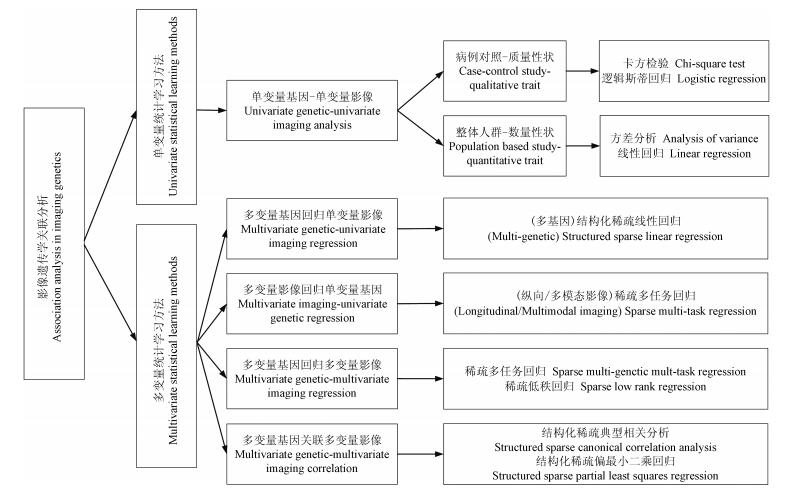
 下载:
下载:
